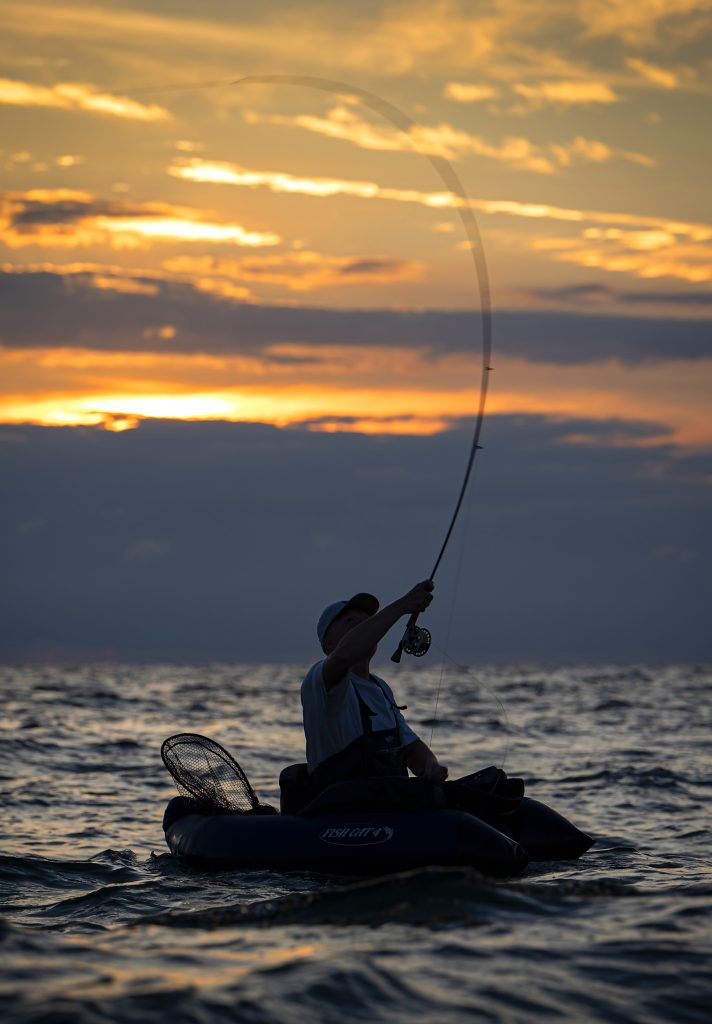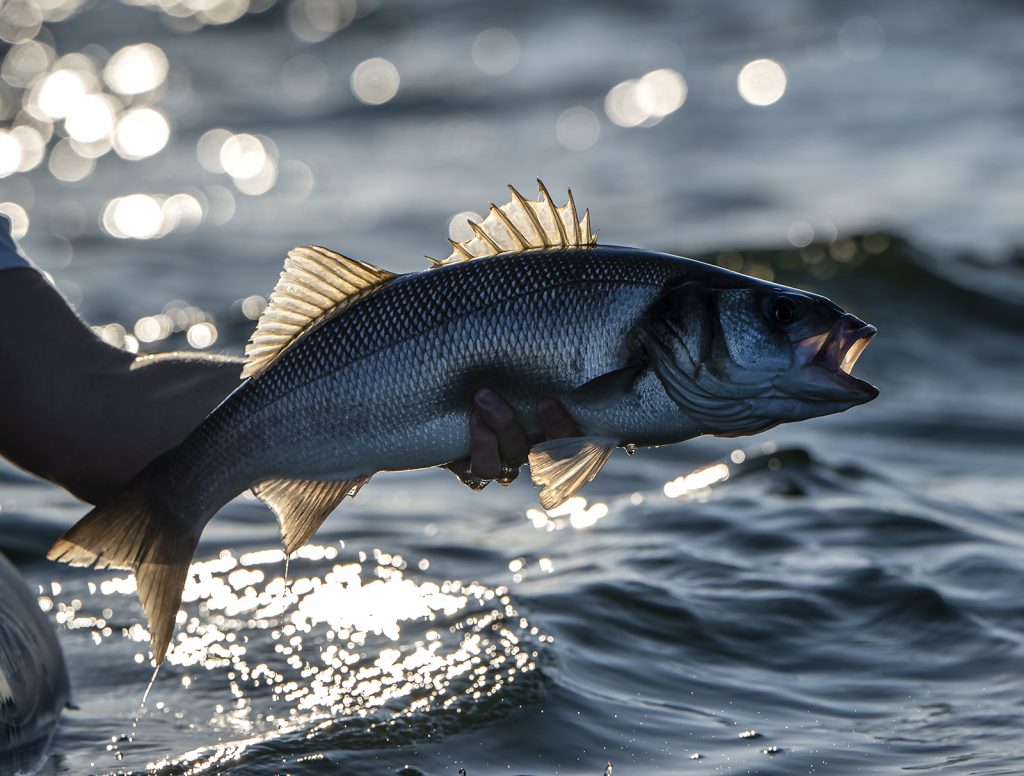
Fishing sea bass along the west coast of Denmark is becoming increasingly popular. It’s not new – it was in the mid to late 1990s that I first heard of a couple of pioneers targeting this unusual species. They can be found along the entire west coast, but the fishing seems to be best along the northern shores.
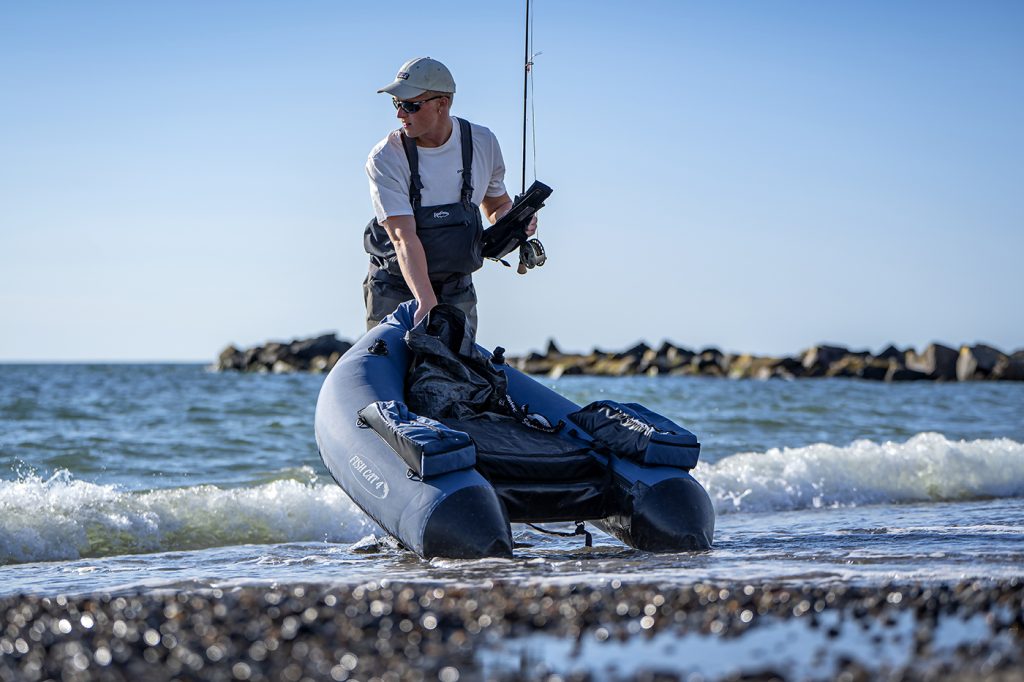
They are highly predatory and like most other predatory fish, they like some structure, where they can hide before they strike their prey. They can be caught from the jetties that are so common along the west coast, but with a float tube, a pontoon boat or a boat you can reach areas that you can’t reach from land. You don’t get that many opportunities to fish from a float tube or a pontoon boat, even a small boat, on the west coast. The tidal currents can present a real challenge and you really need easterly winds or the waves will be too high. The good part is that sea bass don’t mind really good weather. So good fishing weather can actually be proper good weather.
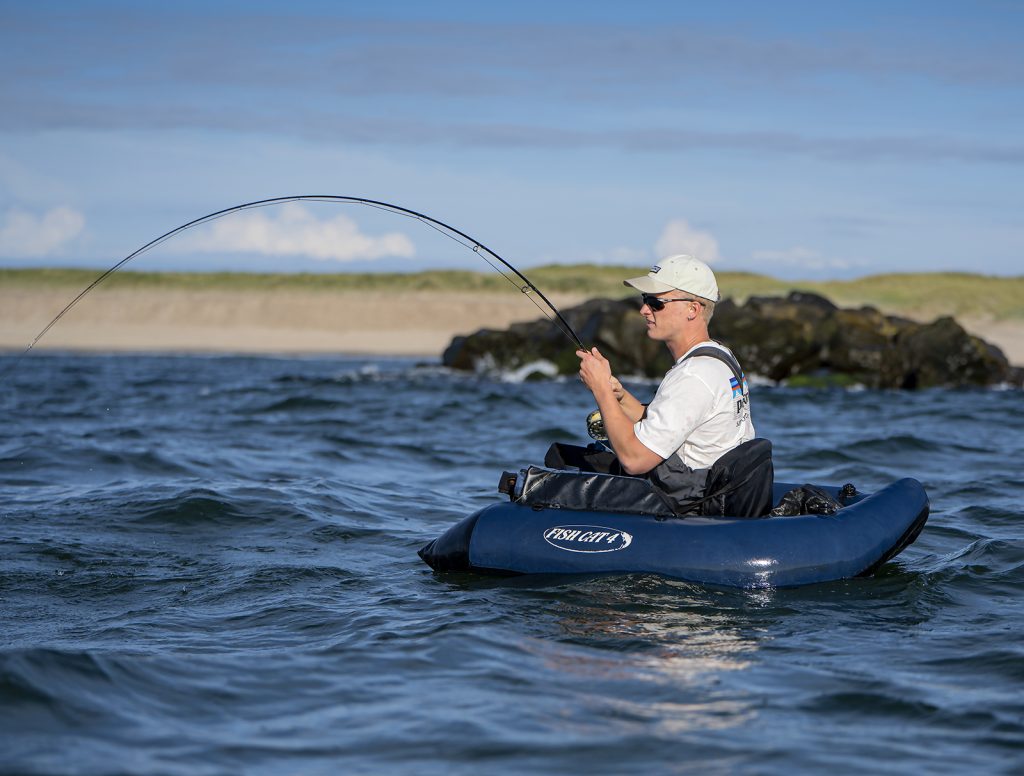
A few weeks ago, Morten visited Karl Aaby, a local who has had plenty of success with sea bass and they had both a good day of fishing and a good chat about the fishing it self. Karl prefers fishing with a sink 3 or even a sink 6 line. Karl says that the sea bass sometimes will chase bait in the surface, but the fishing deep gives the most consistent results. Sea bass like big prey, so Karl’s favourite fly is The Sand Eel King as he calls his own imitation. Today he fishes a white version almost exclusively. Since he fishes the fly deep he designed the fly with a focus on a few key elements:

He uses a weighted SA 250 Shrimp hook to keep the fly upside down.
The fly is deliberately simple and fast to tie since you will invariably lose some to the rocks or in a snag.
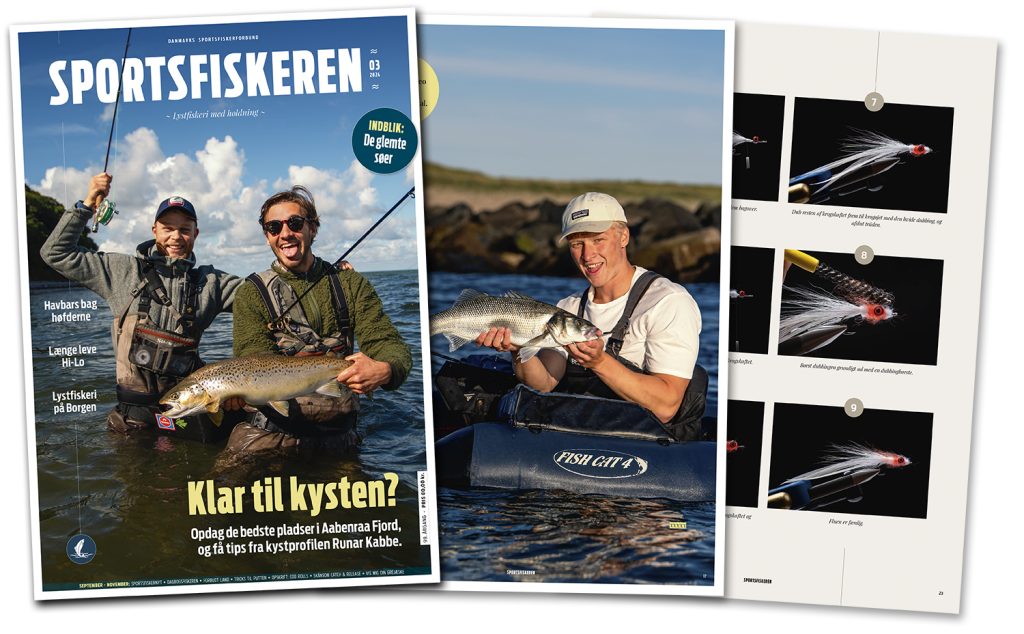
The danish magazine Sportsfiskeren brought an article about Karl in the latest issue – lots of tips and tricks about his fishing for sea bass and instruction of the Kongetobis.
As you can see in the step-by-step below, Karl also incorporates some orange dubbing which really comes into its own when the fly is wet and becomes transparent. A simple and very effective fishing fly. It’s not difficult to tie and the materials are relatively cheap. Karl likes top quality saddle feathers for the tail, but you can substitute these with normal cock hackles. Your fly will appear a little bulkier, but it’ll still fish well.
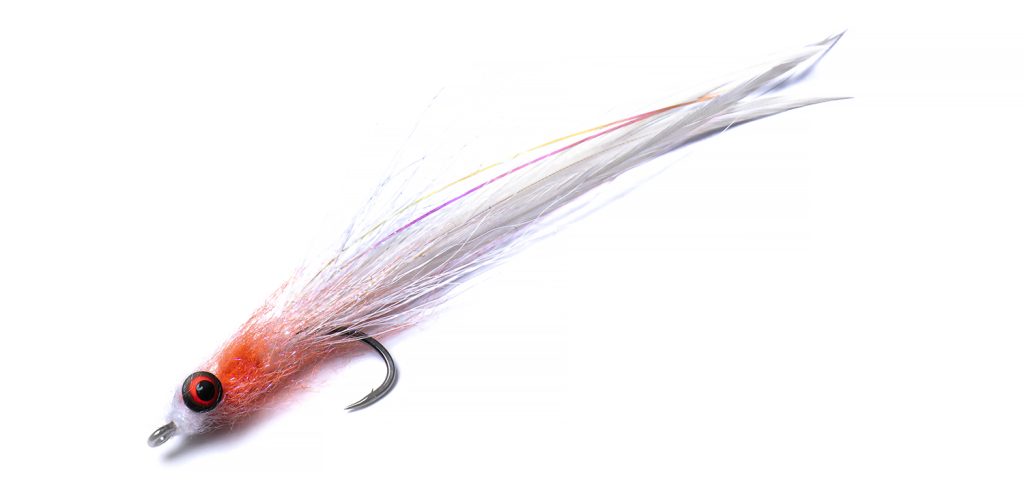
Here’s how Karl ties it.
Kongetobisen (The Sand Eel King)
Hook: Ahrex SA 250, size 2-4
Thread: White
Eyes: Dumbbell, size S-M
Tail: Four white saddle hackles with a sparse collar of bucktail and some Opal Mirage flash
Body: White and orange Senyo’s Laser Dub.
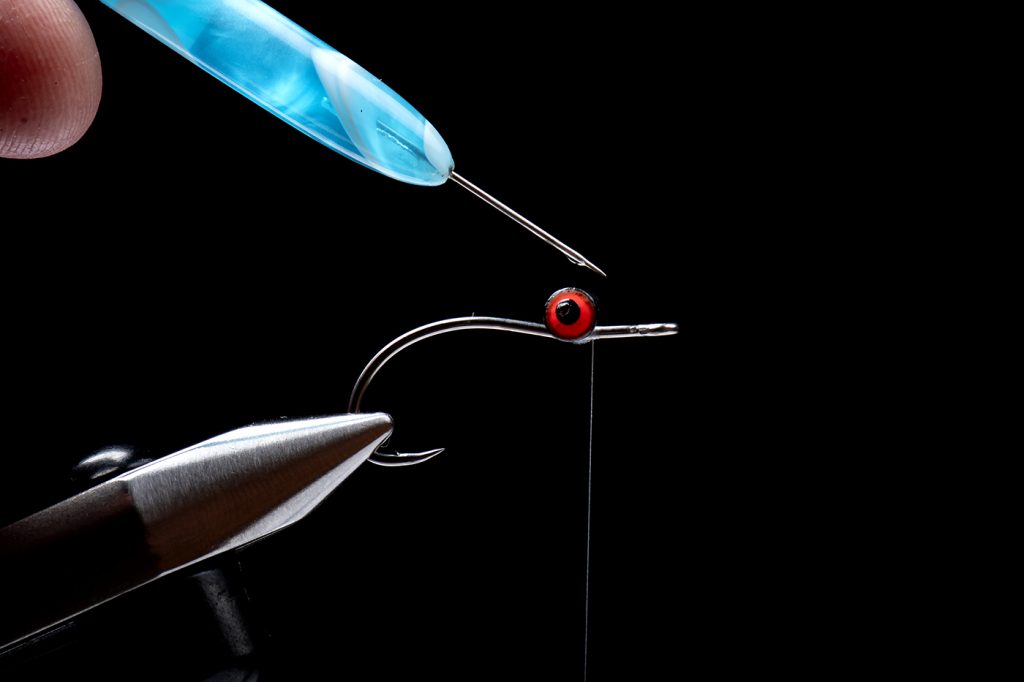
Attach the thread and use figure of 8 turns to secure the dumbbell eyes. Lock the wraps with a drop of super glue.
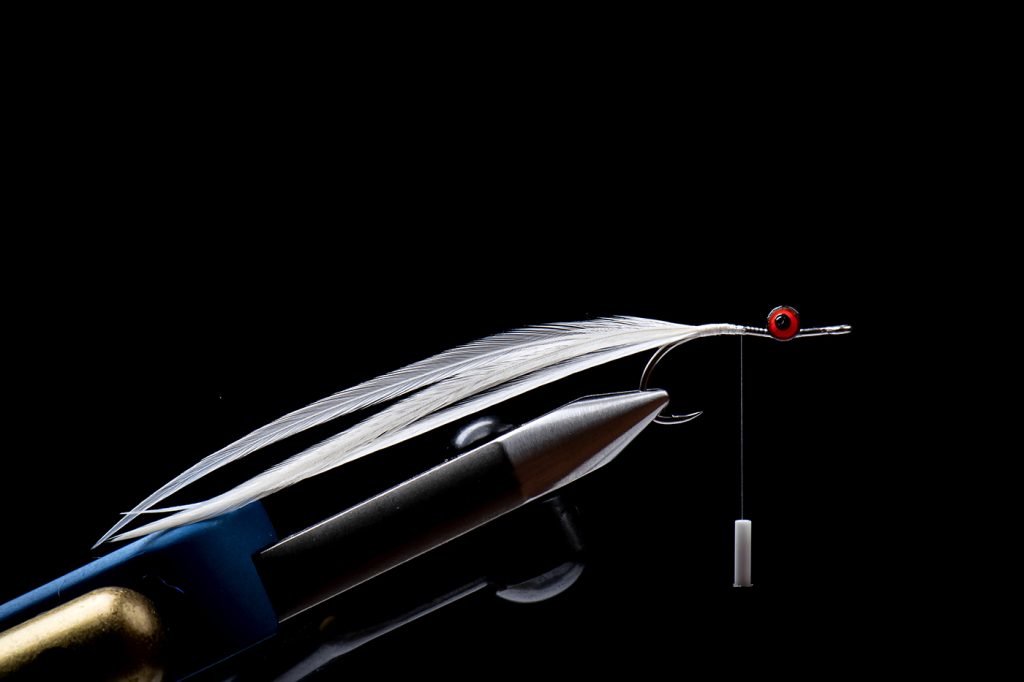
Just above the hook point, tie in the four saddle hackles.

Follow up with a sparse collar of buck tail around the hackles.

Tie in two strand of flash and double them back, so you get four strands in the tail.
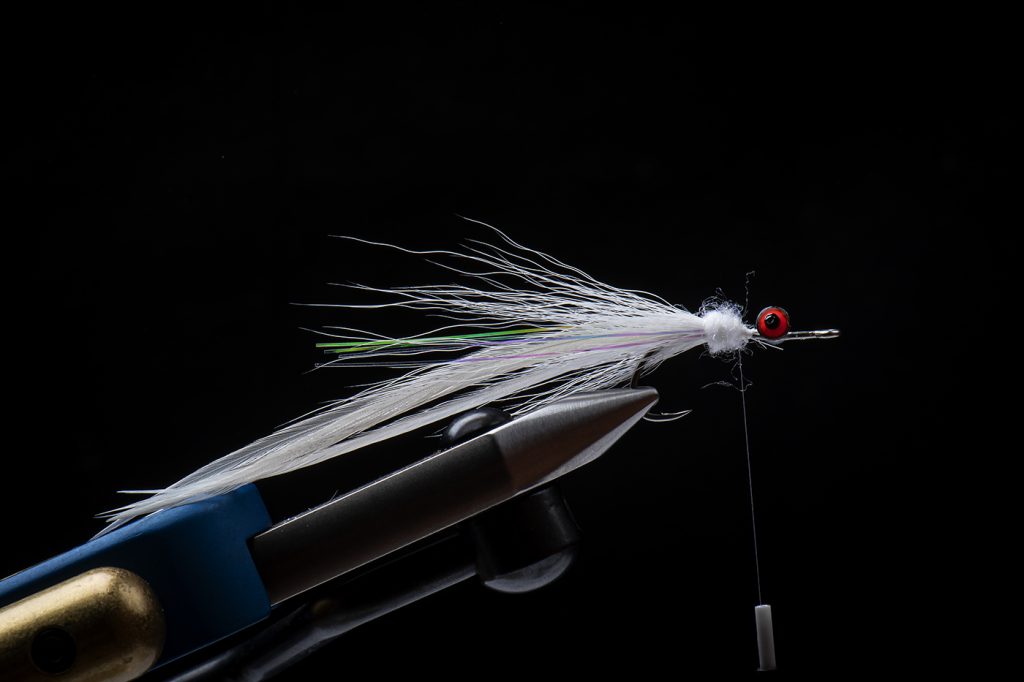
Cover the back quarter of the body with white dubbing.

Cover the middle half of the hook with orange dubbing. Finish with another ball of white dubbing in front of the eyes.
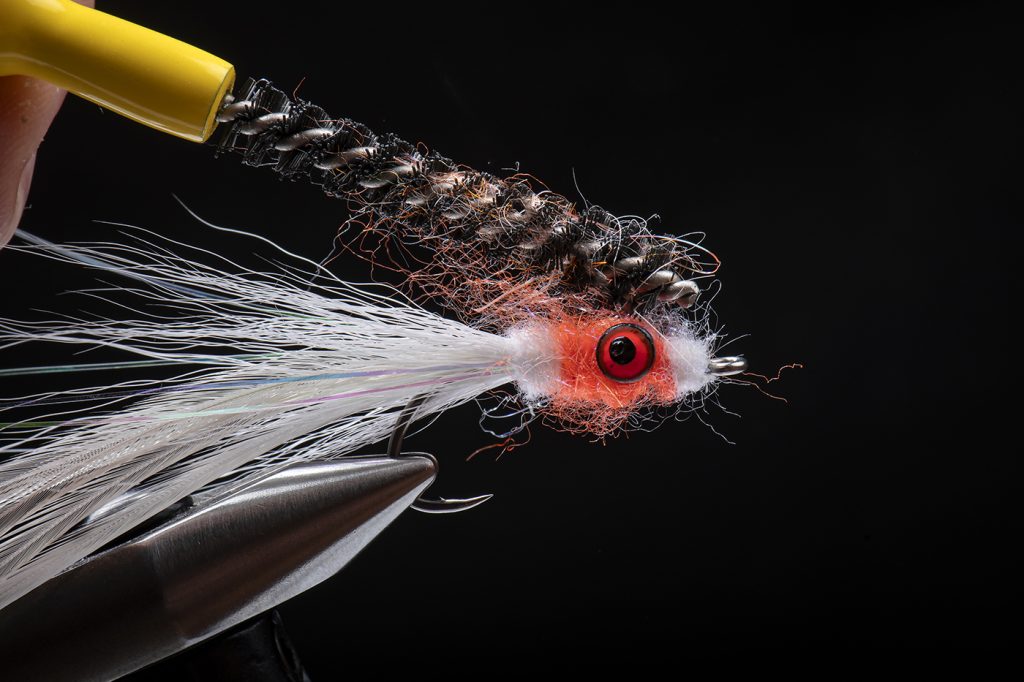
Brush out the dubbing with a dubbing brush.

Finished fly.
This fly can of course be changed infinitely. More or less (or no) weight, different colour and different sizes. Karl says that he used to make more colour variations, but has settled on the white version, since it seems to perform best under most conditions. Being a bait fish imitation it will of course work well for all predatory species.
On our YouTube channel we have several different videos showing different styles of bait fish patterns. Take a look at some of these if you want more inspiration.
